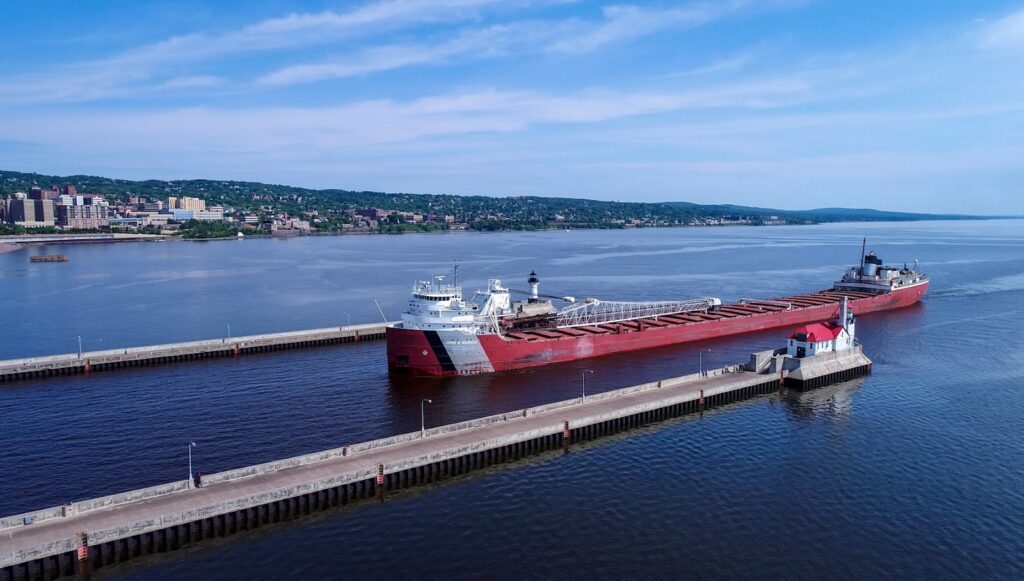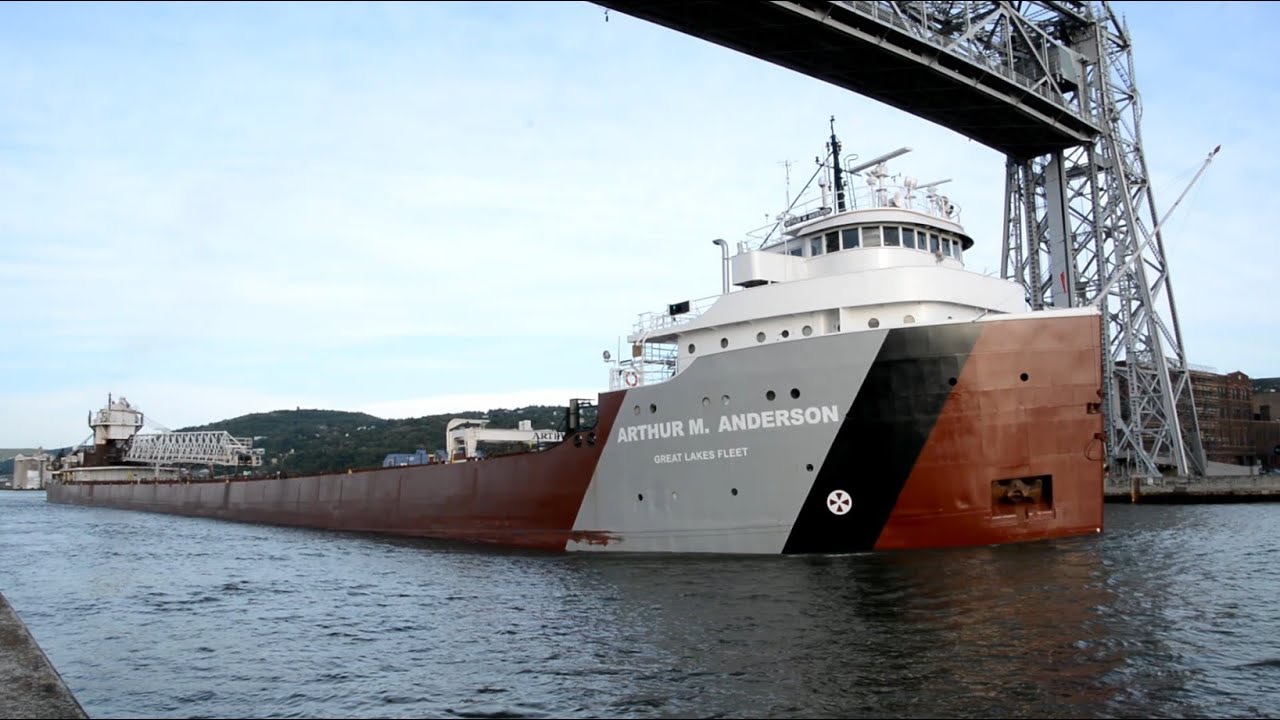The Duluth-Superior harbor is a vital hub for shipping in the Great Lakes region, facilitating the transportation of millions of tons of cargo annually. With a diverse range of shipping companies and railroads operating in the area, the port plays a crucial role in connecting the Midwest to global markets. This article will delve into the details of the Duluth shipping schedule, highlighting the key players involved and the logistics of navigating the harbor throughout the year.
Overview of Duluth-Superior Harbor
Shipping Companies
The Duluth-Superior harbor is home to a variety of shipping companies that play a significant role in the transportation of goods across the Great Lakes. Some of the prominent companies operating in the area include:
- American Steamship Company;
- Cargill;
- Duluth Missabe and Iron Range Railway;
- Federal Marine Terminals;
- General Mills;
- Koch Industries;
- Louis Dreyfus Commodities;
- ADM.
These companies handle a wide range of cargo, including iron ore, coal, grain, and other bulk commodities. Their operations are essential for maintaining the flow of goods to and from the region.
Railroads
In addition to shipping companies, the Duluth-Superior harbor is served by several major railroads that provide crucial transportation links to the rest of the country. The primary railroads operating in the area include:
- BNSF Railway;
- Canadian National Railway;
- Canadian Pacific Railway;
- Soo Line Railroad;
- Union Pacific Railroad.
These railroads play a vital role in transporting cargo to and from the port, ensuring efficient connections to markets across North America.
Navigation Season
While the Duluth-Superior harbor is open to shipping year-round, the navigation season typically runs from March to December. During the winter months, the harbor is closed to shipping due to ice conditions, which can pose safety risks for vessels. As a result, shipping activities are limited during this period, with most traffic resuming in the spring once the ice has cleared.
Shipping Schedule and Logistics
Vessel Traffic
The Duluth shipping schedule is influenced by various factors, including weather conditions, cargo demand, and vessel availability. Shipping companies and port authorities work together to coordinate vessel traffic and ensure the efficient movement of goods through the harbor. Vessels carrying bulk cargoes such as iron ore, coal, and grain are a common sight in the port, loading and unloading their cargo at the various terminals along the waterfront.
Loading and Unloading Operations
Loading and unloading operations at the Duluth-Superior harbor are carried out with precision and efficiency to minimize turnaround times for vessels. Cargo handling equipment such as cranes, conveyors, and loaders are used to transfer goods between ships and shore facilities. Port workers play a crucial role in overseeing these operations, ensuring that cargo is handled safely and expeditiously.
Terminal Facilities
The port is equipped with modern terminal facilities that cater to a wide range of cargo types. Specialized terminals for handling bulk commodities, liquid bulk, and general cargo are available, each tailored to meet the specific needs of different types of vessels. These facilities are essential for supporting the diverse shipping activities that take place in the harbor.
| Terminal Name | Cargo Handled | Operator |
|---|---|---|
| Lake Superior Warehousing | Grain, Salt | Federal Marine Terminals |
| Clure Public Marine Terminal | General Cargo | Duluth Seaway Port Authority |
| Midwest Energy Resources | Coal | Midwest Energy Resources Company |
Cargo Types and Destinations
Bulk Commodities
Bulk commodities such as iron ore, coal, and grain form a significant portion of the cargo handled at the Duluth-Superior harbor. These commodities are transported in large quantities by bulk carriers, which are specially designed vessels equipped to handle loose cargo. Iron ore, in particular, is a key export from the region, destined for steel mills around the Great Lakes and beyond.
Liquid Bulk
Liquid bulk cargoes, including petroleum products and chemicals, are also handled at the port’s specialized terminals. Tanker vessels transport these cargoes in liquid form, requiring dedicated facilities for safe and efficient loading and unloading operations. The port plays a crucial role in supplying fuel and other essential liquids to industries and consumers in the region.
General Cargo
In addition to bulk commodities, the Duluth-Superior harbor also handles general cargo such as machinery, equipment, and consumer goods. These cargoes are typically transported in containers or breakbulk shipments, which require specialized handling equipment and storage facilities. The port’s general cargo terminals are equipped to handle a wide range of goods, supporting diverse trade flows in the region.
1. Iron Ore:
- Destination: Steel mills in the Great Lakes region;
- Volume: Over 20 million tons annually;
- Vessels: Bulk carriers.
2. Coal:
- Destination: Power plants and industrial facilities;
- Volume: Approximately 10 million tons per year;
- Vessels: Bulk carriers.
3. Grain:
- Destination: Global markets;
- Volume: Varied, depending on crop yields;
- Vessels: Bulk carriers, container ships.

Environmental Considerations
Sustainability Initiatives
The shipping industry is increasingly focused on sustainability and environmental stewardship, with efforts underway to reduce emissions and minimize the ecological impact of maritime operations. In the Duluth-Superior harbor, shipping companies and port authorities are implementing various initiatives to promote sustainable practices, such as:
- Emission Controls: Installing scrubbers and other technologies to reduce air pollution from vessels.
- Ballast Water Management: Implementing measures to prevent the spread of invasive species through ballast water discharge.
- Waste Management: Proper disposal and recycling of waste generated during shipping operations.
Regulatory Compliance
Shipping companies operating in the Duluth-Superior harbor must adhere to strict environmental regulations set forth by federal and state agencies. Compliance with rules governing air and water quality, waste management, and wildlife protection is essential to ensure the long-term health of the ecosystem. Regular inspections and audits help monitor and enforce compliance with these regulations, holding operators accountable for their environmental impact.
Community Engagement
Engaging with local communities and stakeholders is an integral part of promoting environmental awareness and sustainability in the shipping industry. Port authorities and shipping companies in Duluth-Superior actively participate in outreach programs, educational initiatives, and public forums to foster dialogue and collaboration on environmental issues. By involving the community in decision-making processes, stakeholders can work together to find innovative solutions that benefit both the environment and the economy.
| Initiative | Description | Impact |
|---|---|---|
| Clean Marine Program | Voluntary program to reduce vessel emissions | Lower air pollution |
| Great Lakes Ballast Water Collaborative | Partnership to address invasive species | Protect native ecosystems |
| Environmental Education Workshops | Outreach events for schools and community groups | Raise awareness of marine conservation |
Conclusion
The Duluth shipping schedule is a complex and dynamic system that relies on the coordination of multiple stakeholders to ensure the smooth flow of goods through the harbor. With a diverse range of shipping companies, railroads, and terminal facilities, the port plays a crucial role in connecting the Midwest to global markets. By prioritizing sustainability, regulatory compliance, and community engagement, the shipping industry in Duluth-Superior is poised to continue its growth while minimizing its environmental impact. As the gateway to the Great Lakes, the port remains a vital link in the supply chain, supporting economic development and trade across the region.
